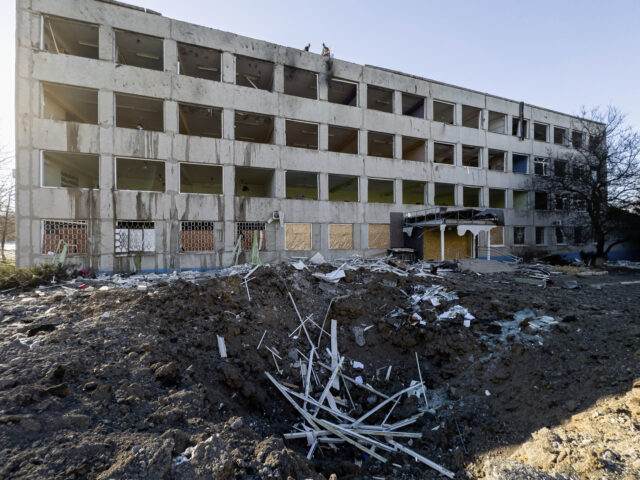Russian claims of a deadly “retaliation” strike on Ukrainian troop accommodation appear to have been debunked by eyewitnesses and the evidence on the ground, as the leader of the Wagner mercenary force talks of capturing “underground cities” in a Donbas mining complex.
Russia’s Ministry of Defence has in recent days claimed that, in response to a “criminal blow of the Kyiv regime in the first minutes of January 2023” against a site accommodating Russian servicemen in the Donbas, which Moscow admits killed 63 and which the Ukrainians claim killed almost 400, a “retaliation operation” was carried out against a site accommodating Ukrainian servicemen.
The Russians reported that they had identified sites in the city of Kramatorsk, named as Hostel No. 28 and Hostel No. 47, temporarily hosting over 700 and over 600 Ukrainian servicemen, respectively.
“As a result of a massive missile attack on these points of temporary deployment of units of the Armed Forces of Ukraine, more than 600 Ukrainian servicemen were destroyed,” they boasted.
However, a Reuters reporter later claimed the strike appears to have “missed its targets” and left “no obvious signs of casualties” at the sites in question.
“Reuters visuals showed some of the windows broken at the College No.47 dormitory. There was a large crater in the courtyard. The windows of the nearby college had been smashed,” the news agency said, having previously said there were “no obvious signs that soldiers had been living there and no sign of bodies or traces of blood.”
“The College No.28 dormitory was entirely intact. A crater lay about 50 metres away from it closer to some garages. Some of the college’s windows were smashed,” they added.
The BBC, too, claims that “[b]y matching pictures of the attack published by local officials to Google satellite imagery and other images online, the BBC has confirmed the location of two sites about a mile apart in Kramatorsk.”
“[T]here’s no visual evidence that shows these two buildings were badly hit or that there has been mass deaths on the scale claimed by Russia,” the state-owned broadcaster has reported.
Meanwhile, the leader of the Wagner private military company (PMC), Yevgeny Prigozhin, has spoken of why he has committed so many of his men, including large numbers of convicts offered six-month contracts as an alternative to serving out prison sentences, to Russia’s bloody efforts to take the Donbas city of Bakhmut, claiming the enormous mining complexes in the area could prove militarily valuable.
“The cherry on the cake is the system of Soledar and Bakhmut mines, which is actually a network of underground cities. It not only [has the ability to hold] a big group of people at a depth of 80-100 metres, but tanks and infantry fighting vehicles can also move about,” he suggested.
The salt and gypsum mines in the area — which American officials claim Prigozhin is interested in for commercial reasons — are indeed vast in scope, spanning well over 100 miles of caves and tunnels and chambers so large that, during peacetime, classical concerts and other large events were held within them.
While it was once suggested in the Western press that taking Bakhmut, where British intelligence alleges Russia is losing large numbers of men including recently mobilised reservists in “frontal assaults”, would “rupture Ukraine’s supply lines and open a route for Russian forces to press on toward Kramatorsk and Sloviansk, key Ukrainian strongholds in Donetsk province”, the current narrative is that it has no real strategic value, and has become a “meat-grinder” for Russian and Ukrainian forces alike to no obvious purpose.
On Monday, Ukrainian state media reported that 43 “combat clashes” had taken place in Bakhmut over the past day, with Ukrainian positions coming under attack 281 times.
Serhii Cherevaty, spokesman for the Eastern Group of Troops of the Armed Forces of Ukraine, claimed the Russians suffered 107 dead and 123 wounded in the fighting.

COMMENTS
Please let us know if you're having issues with commenting.